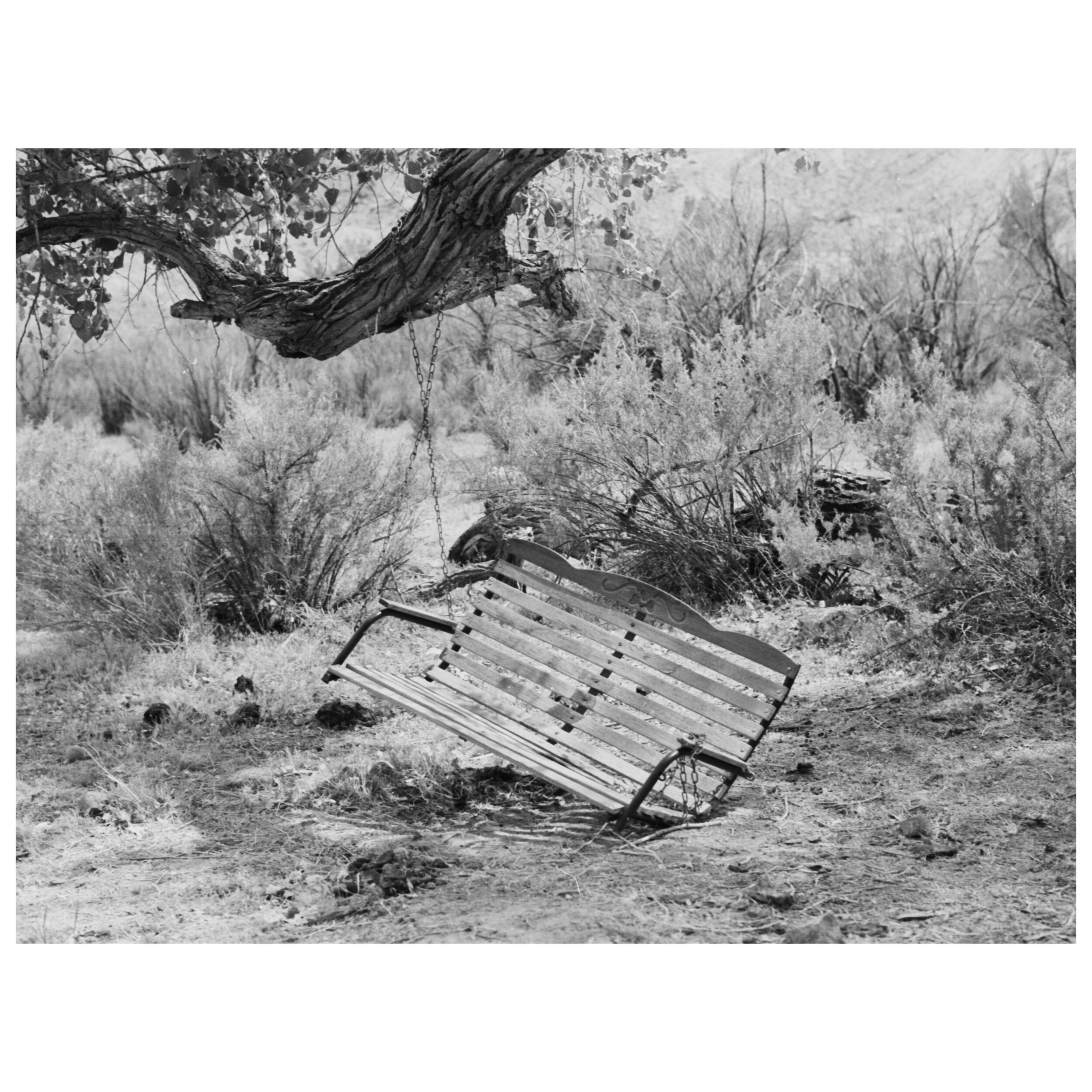This week I spent four days just outside of Moab Utah camping in dispersed campsites. I am always in awe when in such places. The environment can be very harsh and sparse; the beauty and scale of the land are breathtaking and vast. I could have spent a lot of time focusing on the vast landscape around me, but on this trip, I wanted to focus on the small details, like how people mark the Jeep roads (figure 3) and how small amounts of the land are used when camping, such as campfires and tent placement and people set up a temporary place to live in, even if it is for a few days.
Figure 1: Tent at Campsite 1.
On this trip, I also wanted to experiment more with 35mm and black and white. As I was not making the grand landscape my main priority, I felt that 35mm would be the most straightforward format for this, as well as allowing to get a feel and understanding for how I want to approach my project overall.
The questions I wanted to explore where;
Do I want to create images that are more intimate in such a vast and beautiful area rather landscape images portraying the grand landscape?
Will I be able to convey the beauty of these places still?
Will I be able to show how the land is used, show the marks and traces of people?
What will this look like on 35mm film, should I consider using a different format?
Should I include more black and white images in my work overall?
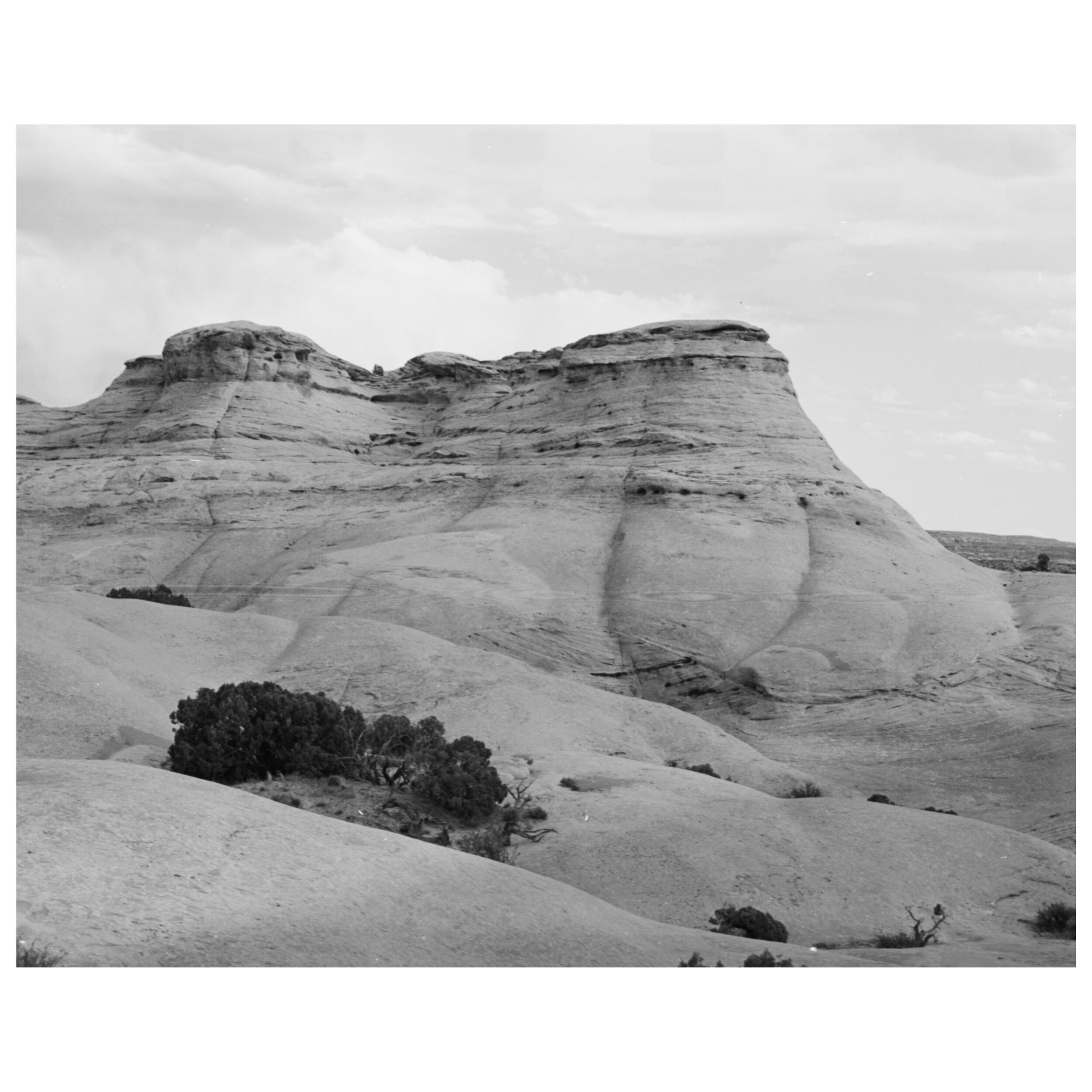
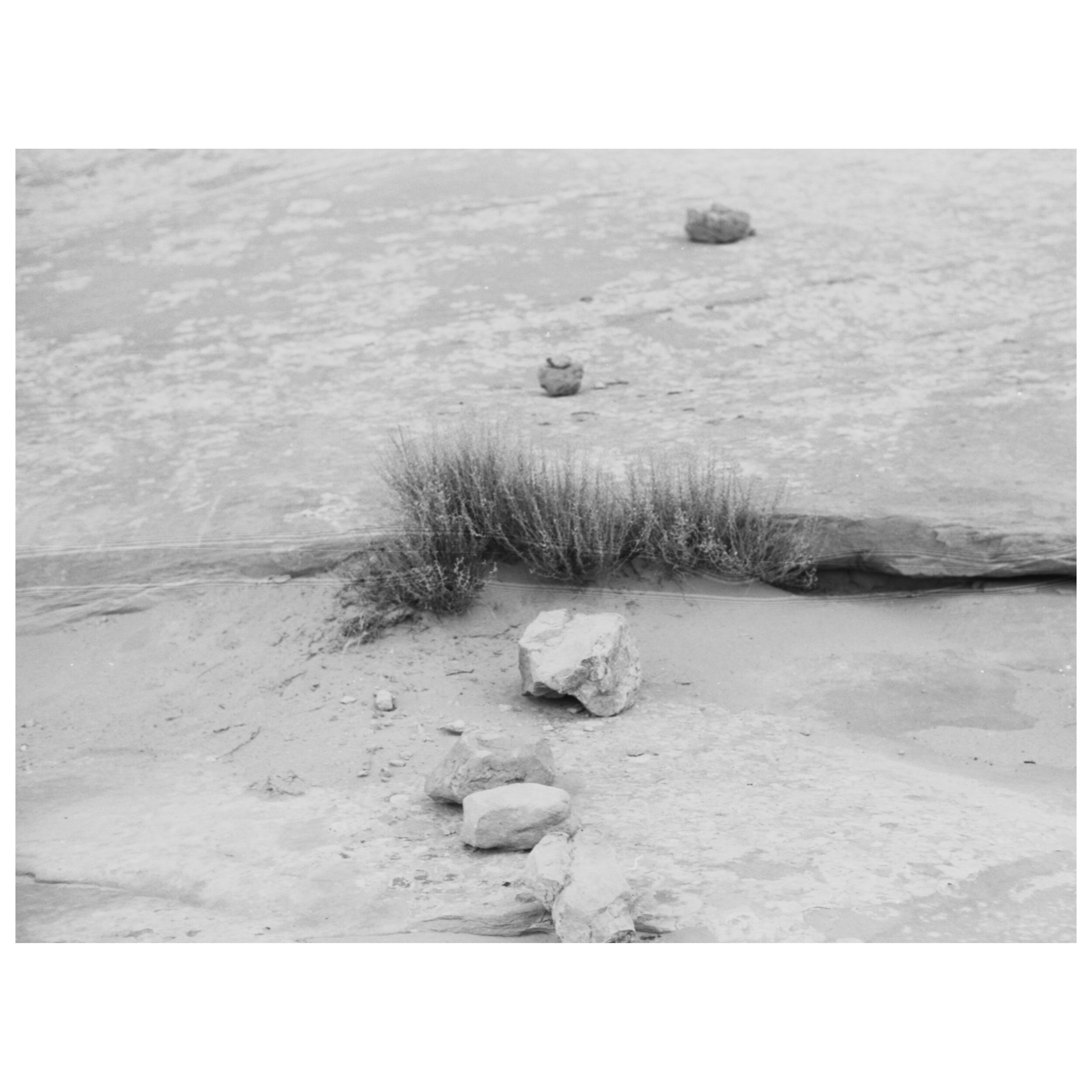
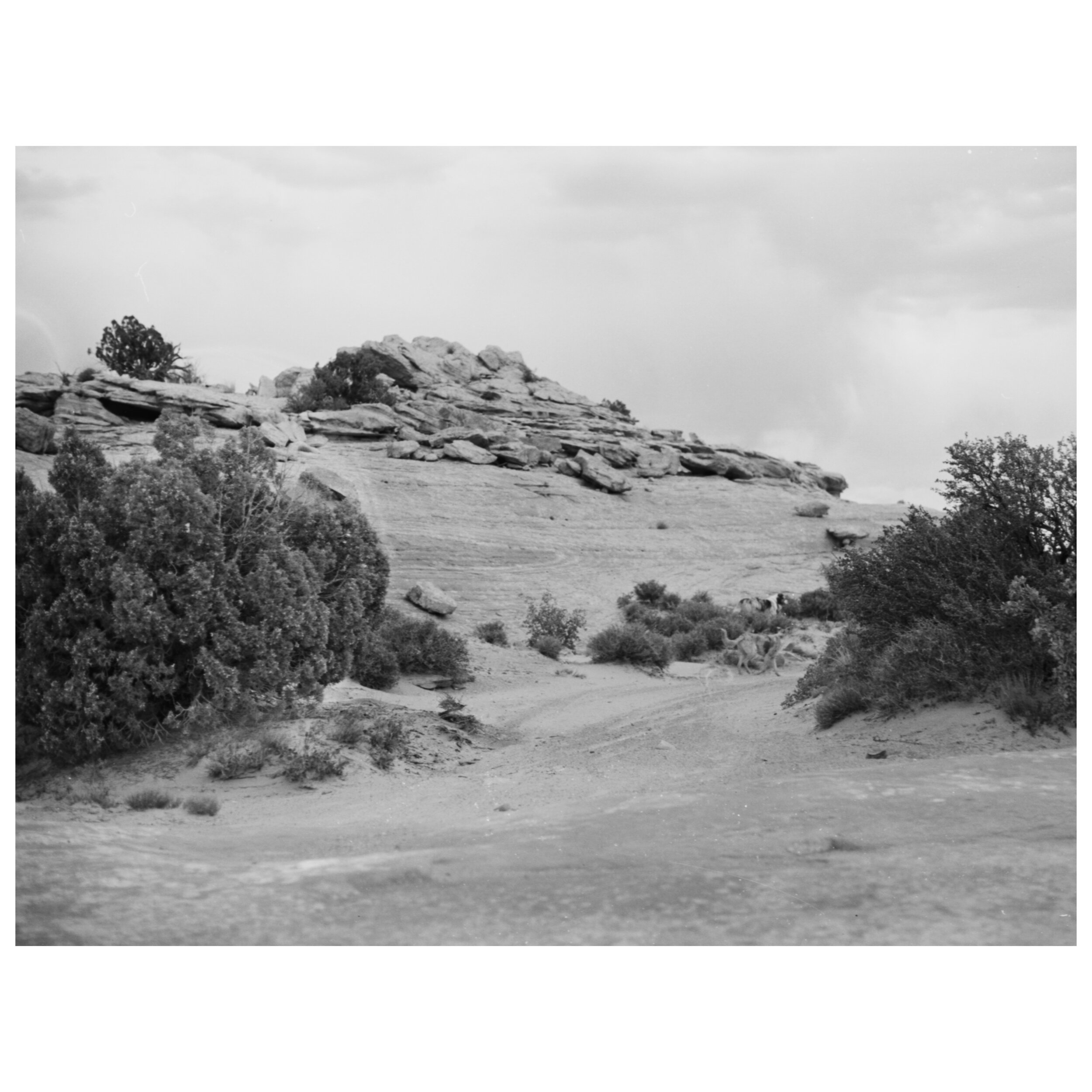
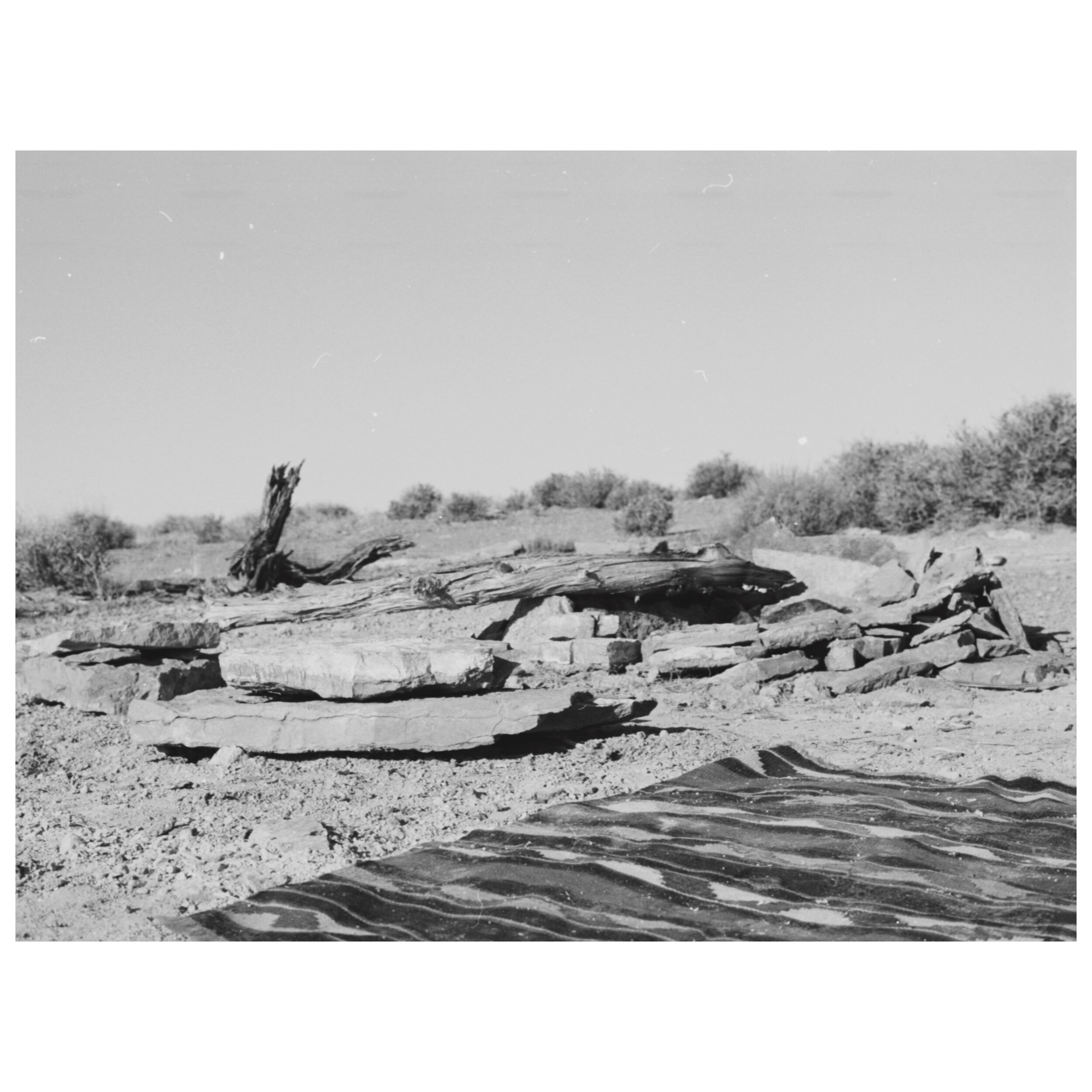
Figure 2: view from our first campsite. / Figure 3: Jeep road marked with rocks / Figure 4: Jeep road / Figure 5: Campfire.
Answers:
1/2. Yes, I enjoyed paying attention to my immediate surroundings, and I felt I was able to represent the beautiful landscape, just as well.
3. I was able to show how people used the land, especially in areas that have structures built near campsites (figures 8 and 9) as well as campsites, where people have left a lot behind (figures 6 and 7). However, I feel I need to figure out how to represent more subtle marks that are found, such as areas flattened tents and trials used to explore.
4. I think for the first exploration 35mm was the right choice. It helped me explore freely and more compared to using 120 or a larger format. I was also able to start to understand how to approach these spaces and how to photograph them, and seeing the results I do think that larger formats will convey my intentions more directly and will have more of an impact. So moving forward, I will start to experiment with 120, and 4x5 images on areas that I know will benefit from these formats. I will also continue to use 35mm throughout the project.
5.I am very pleased with the black and white images. I think its helping move more towards the aesthetic I want. I also believe that mixing colour, along with black and white images, will also advance the overall aesthetic of my project, something I wish to experiment within the coming weeks. I did take two rolls of colour film with me, but when I came to develop them, I had a light leak in my changing bag all those photos were lost.
Other thoughts:
I am Not super happy with the scan quality of the images and will try and figure out a different method moving forward.
Since I started my MA I have named my project High Desert as I was focusing on areas in the high desert; however, as I enter my final module, I realize that my project is more about land use and people, in more areas than just the high desert. So moving forward I will be using the working tile Common Grond.
Overall I am happy with the results from this trip and excited to apply what I have learnt from it to work moving forward.
Figure 6: found campsite / Figure 7: Swing bench at found campsite
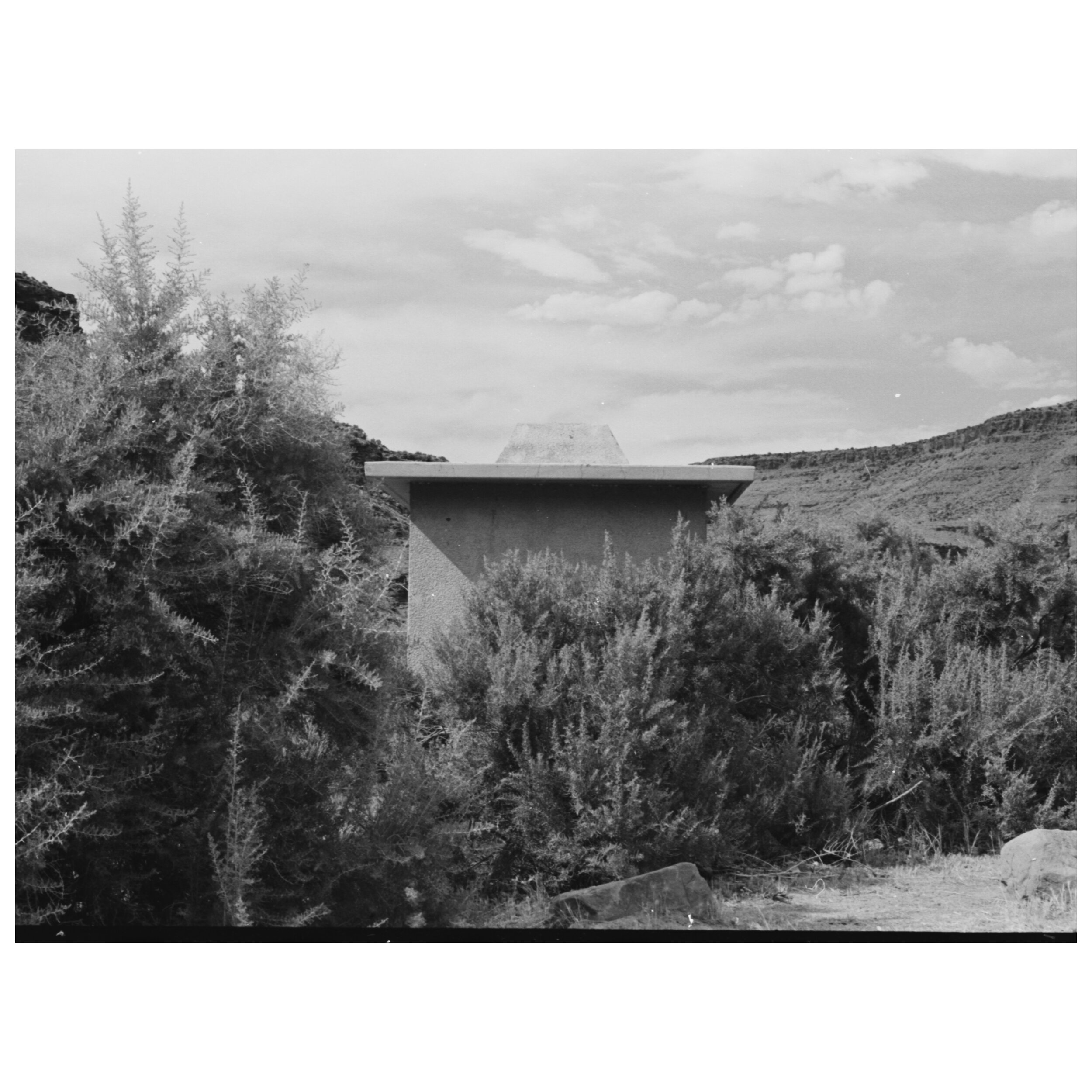
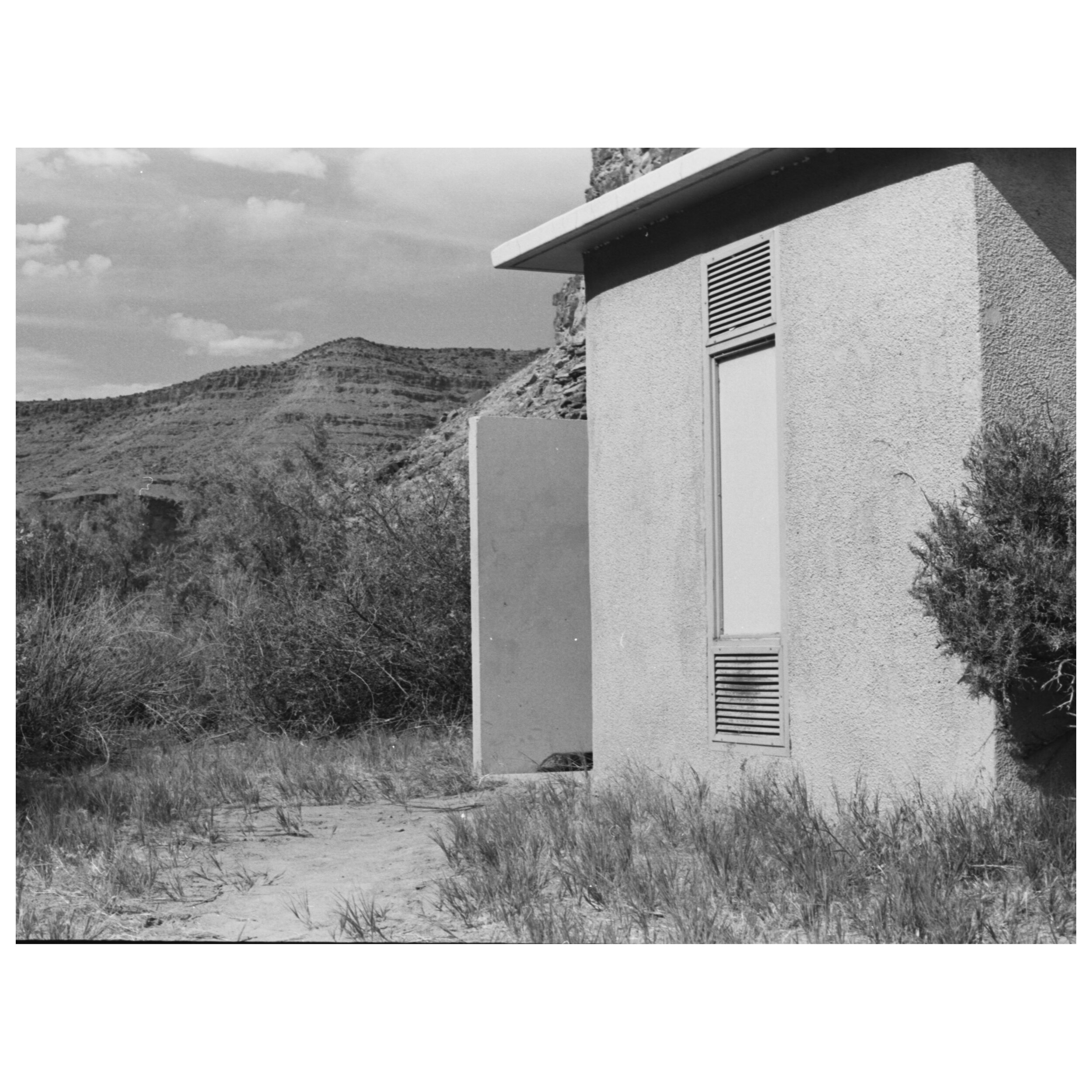
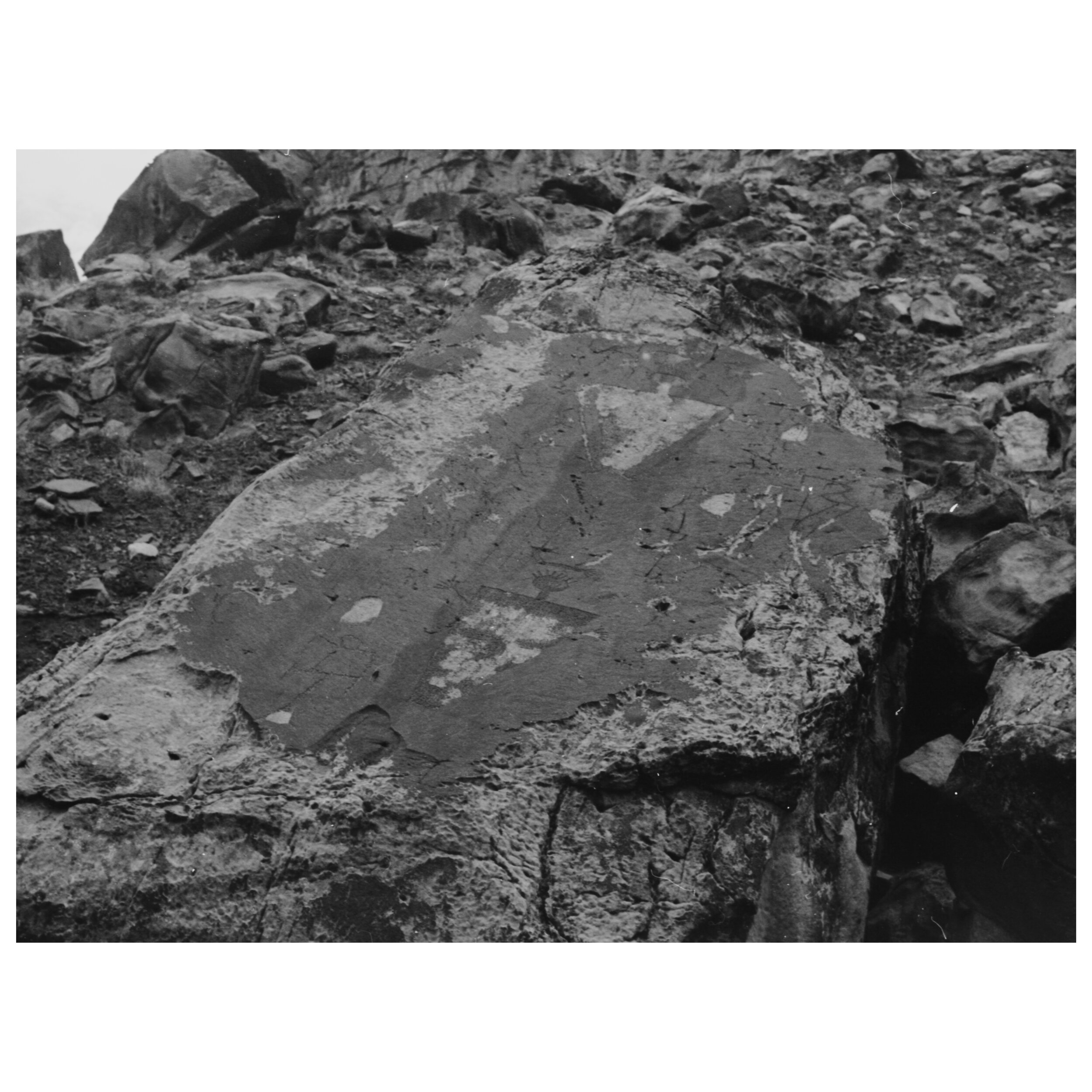
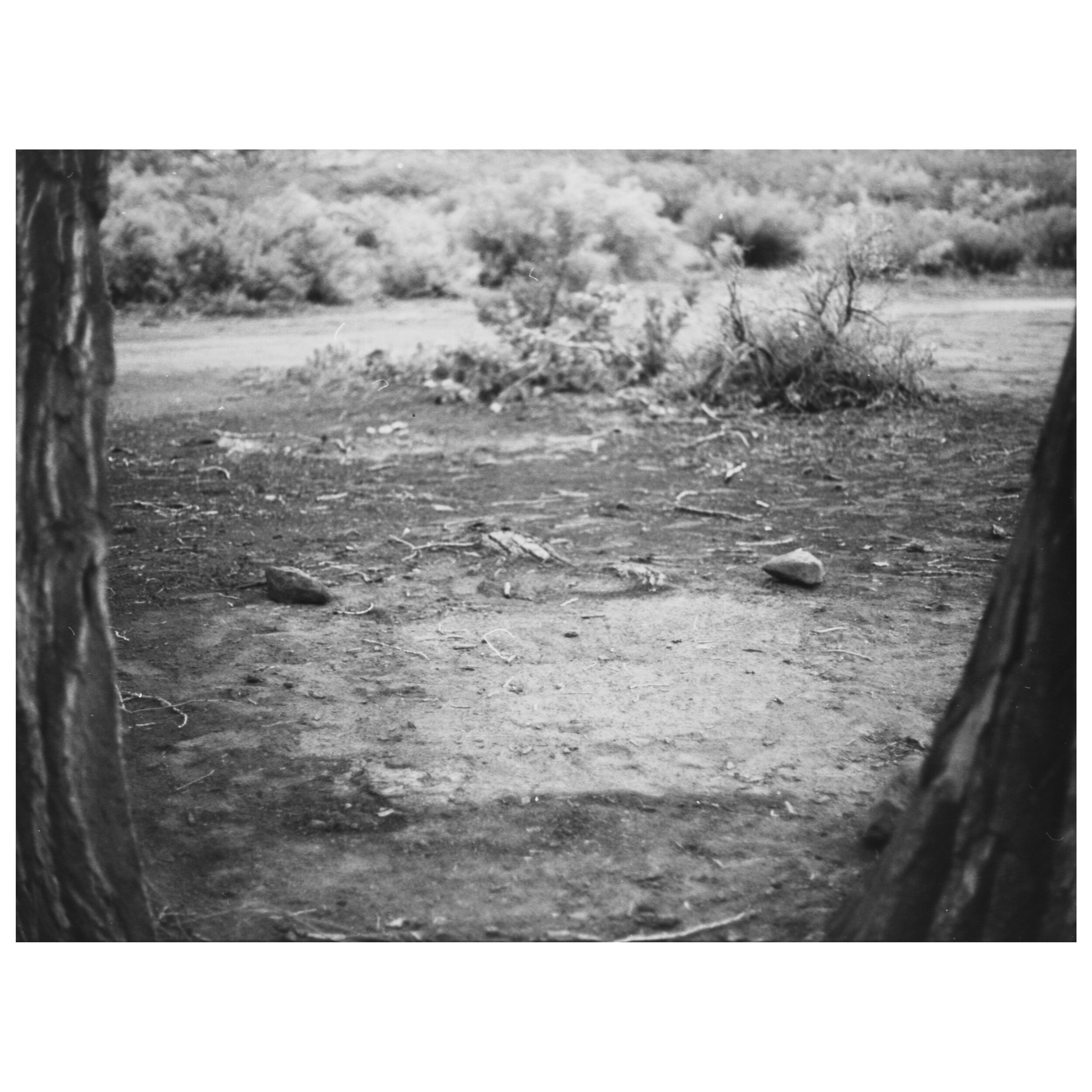
Figure 8: Public bathrooms near the second campsite. / Figure 9: Public bathrooms near the second campsite. / Figure 10: Petroglyphs opposite second campsite. / Figure 11: Tent spot.



